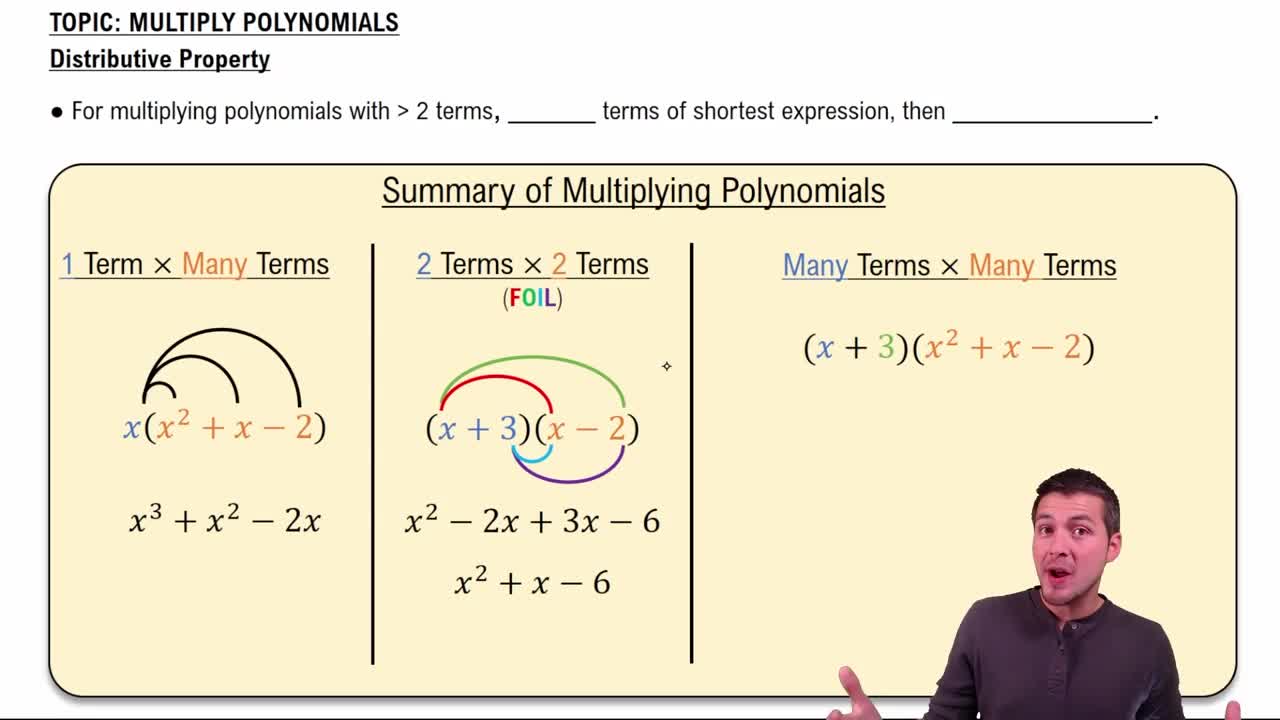Table of contents
- 0. Review of Algebra4h 16m
- 1. Equations & Inequalities3h 18m
- 2. Graphs of Equations43m
- 3. Functions2h 17m
- 4. Polynomial Functions1h 44m
- 5. Rational Functions1h 23m
- 6. Exponential & Logarithmic Functions2h 28m
- 7. Systems of Equations & Matrices4h 6m
- 8. Conic Sections2h 23m
- 9. Sequences, Series, & Induction1h 19m
- 10. Combinatorics & Probability1h 45m
1. Equations & Inequalities
Linear Equations
Problem 17b
Textbook Question
Solve each equation. 3x+5 - 5(x+1)= 6x+7
 Verified step by step guidance
Verified step by step guidance1
Distribute the -5 across the terms inside the parentheses: \(-5(x+1) = -5x - 5\).
Rewrite the equation with the distributed terms: \(3x + 5 - 5x - 5 = 6x + 7\).
Combine like terms on the left side: \(3x - 5x + 5 - 5 = -2x\).
The equation now is \(-2x = 6x + 7\).
Move all terms involving \(x\) to one side by adding \(2x\) to both sides: \(0 = 8x + 7\).
Recommended similar problem, with video answer:
 Verified Solution
Verified SolutionThis video solution was recommended by our tutors as helpful for the problem above
Video duration:
2mPlay a video:
Was this helpful?
Key Concepts
Here are the essential concepts you must grasp in order to answer the question correctly.
Distributive Property
The Distributive Property states that a(b + c) = ab + ac. This property allows us to multiply a single term by two or more terms inside parentheses. In the given equation, applying the distributive property to -5(x + 1) is essential to simplify the expression correctly.
Recommended video:
Guided course

Multiply Polynomials Using the Distributive Property
Combining Like Terms
Combining like terms involves adding or subtracting terms that have the same variable raised to the same power. This step is crucial in simplifying equations, as it helps to consolidate terms and make the equation easier to solve. In the equation provided, combining like terms will help isolate the variable x.
Recommended video:

Combinations
Isolating the Variable
Isolating the variable means rearranging the equation to get the variable on one side and the constants on the other. This process often involves performing inverse operations, such as addition or subtraction, and is key to solving for the variable. In the context of the equation, isolating x will lead to the final solution.
Recommended video:
Guided course

Equations with Two Variables

 7:48m
7:48mWatch next
Master Introduction to Solving Linear Equtions with a bite sized video explanation from Callie
Start learningRelated Videos
Related Practice






